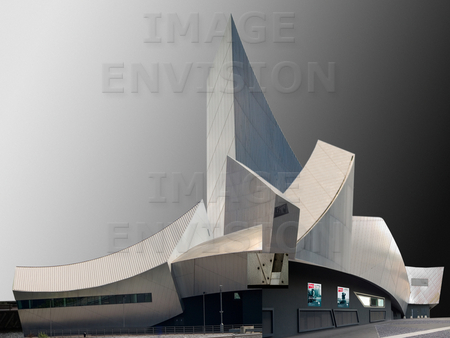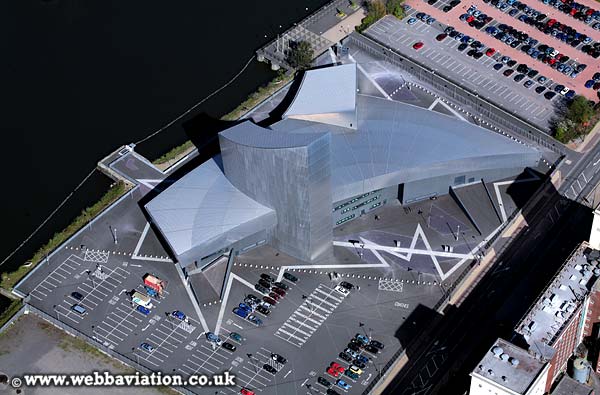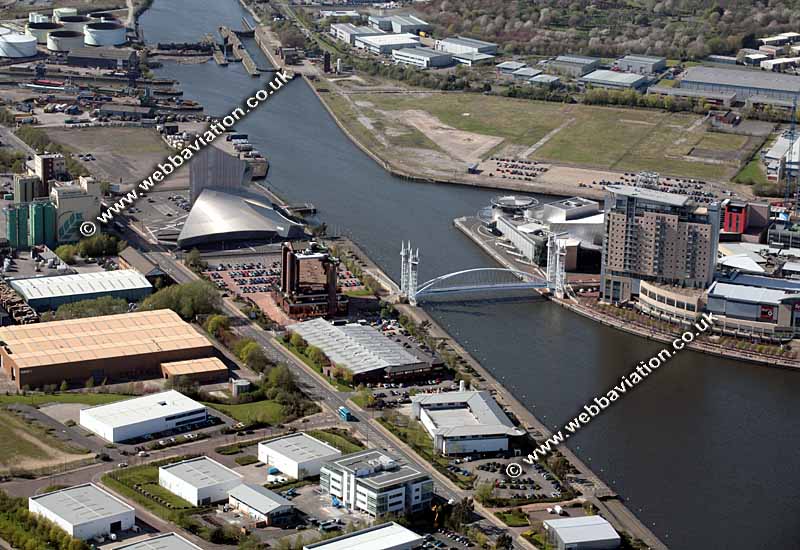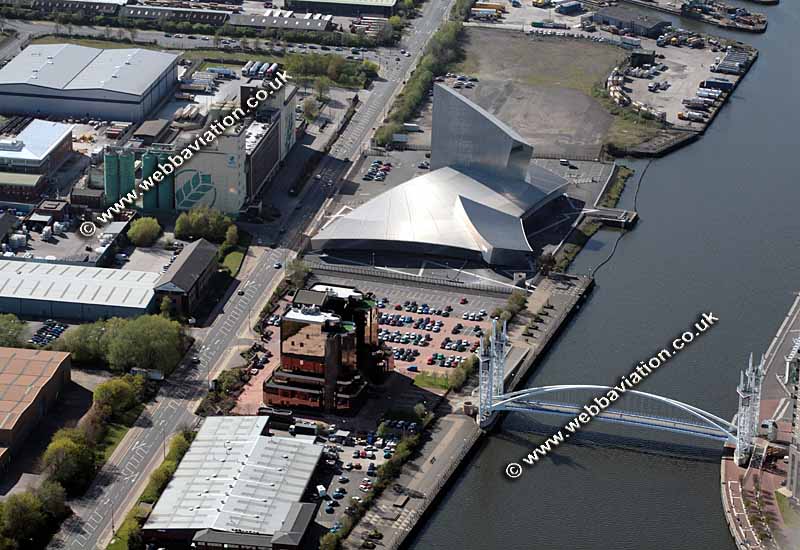
Imperial War Museum ,Manchester, England
The Imperial War Museum North deals with the conflicts that have shaped the 20th century and those which will continue to shape the future. The concept for the project is that of a globe shattered into fragments and then reassembled as an iconic emblem of conflict. The building is the interlocking of three shards representing earth, air, and water. The Museum, permanent exhibits, temporary exhibits, learning center and restaurant were completed in 2001 by SDL and Sir Robert McAlpine and opened in 2002. During its first year, the Museum had more than 421,000 visitors (July 2002 - June 2003).
帝国战争博物馆设计理念是:将一个球体破成碎片,然后再将这些碎片重新组合成矛盾的象征符号。
这栋建筑将三块分别代表着地球、空气和水的薄硬壳相互联合在一起。
这座集永久性展览、临时展览、学习中心及餐厅于一身的博物馆已于2002年开馆,在开馆的第一年就接待来超过42万名游客。
The IWMN is fundamentally based on this world - a contemporary world shattered into fragments and reassembled as a fundamental emblem of conflict. These fragments, shards or traces of history, are in turn assembled on this site and projected beyond it. An entirely new landscape will offer an environment in which the participatory experience of the public will begin long before the visitors enter through the actual doors. The building exists in the horizon of the imagination and is visible across the strategic points of the city and its surroundings.
The IWMN is a constellation composed of three interlocking shards. The Earth Shard forms the generous and flexible museum space, signifying the open, earthly realm of conflict and war. The Air Shard serves as a dramatic entry into the Museum, with its projected images, observatories and education spaces. The Water Shard forms the platform for viewing the Canal, complete with a restaurant, cafe, deck and performance space. These three shards together - Earth, Air and Water - concretize Twentieth century conflicts which have never taken place on an abstract piece of paper, but rather have been fought on dramatic terrain by infantry, in the skies by the airforce and in the sea by battleships.
This composition and constellation of forms, functions and relationships all complement the area in which the project is situated, forming a center out of the disparate places around it. The Lowry Centre, Manchester United Football Fields, and the Manchester Ship Canal and transportation system are brought together in a new perspective for the pedestrian and for those coming to the area by car. The IWMN can be observed from various vistas and at the same time provide new views from within itself of the surrounding panorama - a panorama which becomes part of the Museum experience and the story of the people of the northern region told within it. The museum spaces respond to new concepts of their exhibitions by showing in a concrete and visible form how the personal histories of the people of the North are woven into the fabric of Twentieth century conflict. What makes the IWMN unique is the integration of architecture, exhibition design engineering and a vision of history and the future. The building is of simple construction, with low-maintenance costs, efficient use, ecological responsibility and a sensitive security awareness. The Museum's impact is one of new life and new potential.
"As Paul Valery pointed out the world is permanently threatened by two dangers: order and disorder. This project develops the realm of the in-between, the realm of democratic openness, plurality and potential. By navigating the course between rigid totalities on one hand, and the chaos of events on the other, this building reflects an evolving identity open to profound public participation, access and education. The Museum is therefore a catalyst for focussing energies, both entrepreneurial and spiritual, and moulding them into a creative expression. If Henry Adams were writing today he would add to the Virgin and the Dynamo the Museum, for it is the cultural dynamo transforming the past into the New Millennium. The importance of this act of construction is underscored by the recreation of the entire Trafford region, leading to urban regeneration, job creation, and tourist spending. But beyond the demands for integration and quality, the IWMN will offer substance for the imagination and the daring of the unexpected. The IWMN will provide new answers to all programs, invent new connections between the building and its surroundings and become an instantly recognizable, memorable place of encounter."
Daniel Libeskind







 cityup.org 传真电话:010-88585380
cityup.org 传真电话:010-88585380